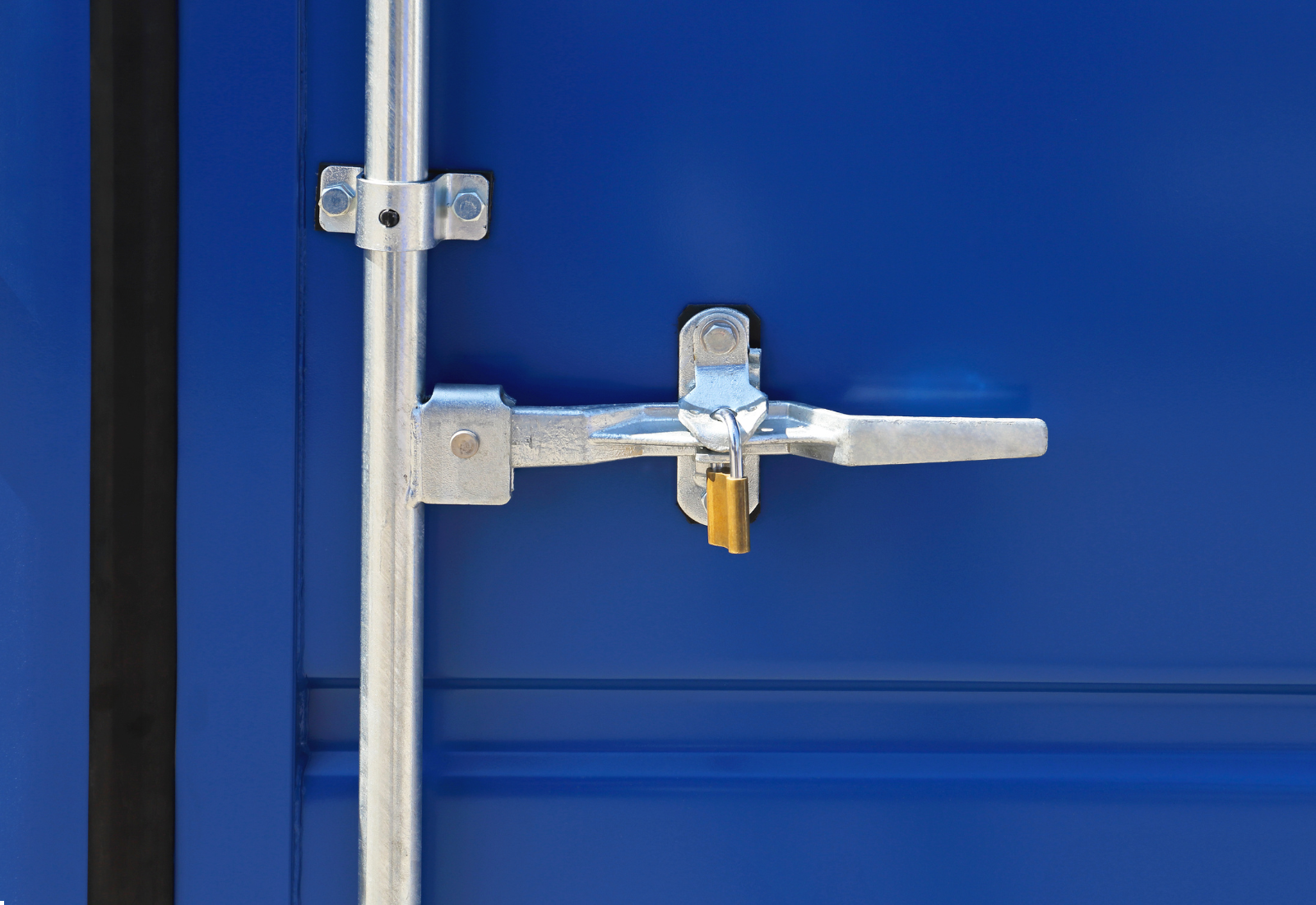Whether you’re storing construction tools, event equipment, or overflow inventory, storage trailers provide a flexible, on-site solution for a wide range of industries. But not all trailers are created equal, especially when it comes to safety and compliance.
From theft prevention to OSHA regulations, this guide explores the built-in safety features, regulatory standards, and best practices that make storage trailers a secure, legal, and reliable choice for job sites and businesses alike.
Why Safety Matters in Storage Trailers
When choosing a storage trailer, safety isn’t a luxury—it’s a necessity. Failing to prioritize security or meet legal requirements can result in damaged goods, worker injuries, or costly penalties. Here’s why safety matters:
- Protecting Valuable Equipment: Trailers often house high-value tools, electronics, or materials. Without robust security, they’re vulnerable to theft or tampering.
- Ensuring On-Site Safety: Loose flooring, improper lighting, or poor ventilation can pose safety risks to anyone entering the trailer.
- Meeting Regulatory Standards: From OSHA to local fire codes, trailers must meet certain criteria to be used on job sites or commercial properties.
Key Safety Features of Storage Trailers
Modern storage trailers are equipped with a variety of safety features to enhance security and protect your team and equipment.
Heavy-Duty Locking Systems
Locks are the first line of defense against theft and unauthorized access.
- Types of locks include commercial-grade padlocks, lock boxes, puck locks, and tamper-proof locking bars.
- Lock reinforcements prevent break-ins by shielding hardware from bolt cutters or crowbars.
- Ideal for construction sites, festivals, or high-theft areas.
Weatherproof Construction
Storage trailers are engineered to withstand the elements, making them ideal for year-round outdoor use. Sealed doors and high-quality weatherstripping help prevent rain, snow, and humidity from seeping in, protecting the contents from water damage.
Many trailers are also built with corrosion-resistant steel that holds up against rust and environmental wear, preserving structural integrity over time. This weatherproof construction is essential for job sites, seasonal storage, and any location where exposure to the elements is a concern.
Anti-Slip Flooring
To reduce the risk of slips, trips, and falls, storage trailers often feature anti-slip flooring. Textured steel surfaces or rubberized coatings provide reliable traction even in wet, muddy, or icy conditions. For added convenience, many trailers are designed to be ramp-compatible, allowing for smoother and safer loading and unloading of heavy items. These flooring features are particularly important in high-traffic environments like construction sites, event setups, or any other operation where safety is a top priority.
Interior Lighting Options
For safe entry—even after dark—consider:
- Motion-activated lighting for hands-free access.
- Solar-powered options for off-grid or remote areas.
- LED strip lighting for even, energy-efficient illumination throughout the trailer.
- Battery backup systems to ensure lighting remains functional during power outages.
Proper Ventilation
Proper ventilation is essential for maintaining air quality inside storage trailers and protecting the contents within. Roof vents or side louvers help prevent condensation and heat buildup, especially during warm or humid conditions. This is particularly important for storing sensitive materials such as paper, fabrics, electronics, or perishables that can be damaged by mold or moisture.
Additionally, ventilation improves comfort and safety for staff who frequently access the trailer, making it a more functional space overall.
Reflective Markings and Visibility Enhancements
Reflective markings and visibility features play a crucial role in preventing accidents, especially in busy or dimly lit environments. Tape, corner markers, or integrated LED strips can significantly enhance trailer visibility during early morning or nighttime hours. Painted hazard stripes are also beneficial for identifying trailer edges and entry points, helping guide foot or vehicle traffic safely.
These enhancements are especially valuable on crowded worksites, roadside locations, or any area with high activity levels.
Compliance Standards for Storage Trailers
Storage trailers used on commercial or construction sites are subject to several local and federal regulations. Ignoring them can lead to fines, delays, or liability.
OSHA Regulations
If your trailer is on a job site, OSHA guidelines likely apply:
- Must allow safe and clear access—no obstructions, secure stairs or ramps.
- Trailer floors must be structurally sound and maintained to avoid injuries.
- No improper storage of hazardous materials without proper containment or signage.
- Electrical systems (if present) must meet OSHA standards for wiring, grounding, and circuit protection.
- Trailers used for office or break areas must have adequate ventilation, lighting, and exits.
- Trailers must be kept free of trip hazards, including cords, clutter, or uneven flooring.
DOT Requirements (If Trailers Are Transported)
For trailers that are moved on public roads:
- Must comply with Department of Transportation (DOT) rules for lighting, weight, and structural integrity.
- Regular inspections are required if trailers are used as mobile units.
- Brake lights, reflectors, and tires must be roadworthy and up to code.
Fire Safety Considerations
Preventing fire risks in and around a storage trailer is essential for protecting both people and property. If the trailer has been modified for office or workspace use, it’s important to use fire-rated building materials to reduce potential hazards. Flammable or combustible materials should never be stored inside the trailer unless they are housed in approved containers with proper signage. Additionally, fire extinguishers should be installed and kept in clearly marked, easily accessible locations, and all emergency exits should always remain unobstructed.
Local Zoning and Permits
Every municipality has different rules. For example,
- Temporary storage trailers may require zoning permits, especially if visible from public areas.
- Many cities limit how long a trailer can remain on-site.
Best Practices for Safe Use of Storage Trailers
Even with built-in safety features, how your trailer is used day-to-day plays a big role in preventing accidents and maintaining compliance.
Routine Inspections
Inspect your trailer regularly to stay ahead of problems.
- Check for structural damage, soft spots in the floor, and door malfunctions.
- Test locks, lights, and electrical systems.
- Look for signs of water intrusion or pest activity.
Safe Loading and Unloading Procedures
Reduce the risk of injury and protect your inventory.
- Train staff on safe lifting techniques and proper stacking.
- Use ramps or hand trucks to minimize strain.
- Avoid overloading one side to prevent tipping or floor damage.
- Mark load limits clearly inside the trailer to avoid overcapacity.
- Ensure good lighting during loading/unloading, especially in early morning or evening hours.
- Inspect ramps and entry points regularly for wear, rust, or slippery conditions.
Emergency Access Plans
Preparing for the unexpected is a crucial part of trailer safety. Always keep a clear, unobstructed path to and from all trailer doors to ensure quick evacuation if needed. Emergency contact numbers and response procedures should be posted inside the trailer or nearby in a visible location. If staff regularly work inside the trailer, it’s essential to ensure they can exit quickly and safely in case of fire, power failure, or other emergencies.
Securing the Trailer On-Site
Proper setup prevents movement or accidents.
- Use wheel chocks, stabilizer jacks, or leveling blocks.
- Anchor the trailer in high-wind zones.
- Place the trailer in visible, well-lit areas to deter theft.
Storage Trailer Safety Checklist
Use this quick checklist to assess your current trailer setup:
- Heavy-duty lock system installed
- Weatherproofed and sealed exterior
- Anti-slip flooring in good condition
- Interior lighting functional
- Adequate ventilation present
- Reflective tape or markings applied
- Trailer placement meets zoning laws
- Inspected for structural safety
- Emergency access clearly marked
- Trailer stabilized on-site
Conclusion: Safety First, Always
Storage trailers are incredibly useful, but only when they’re equipped and used properly. By prioritizing built-in safety features, following compliance guidelines, and practicing responsible use, you can keep your team, assets, and operations secure.
Need a storage trailer that checks all the safety and compliance boxes? Contact Storage On-Site today. We’ll help you find a rental or purchase option that fits your project, meets your site’s requirements, and delivers peace of mind. Request a quote now.

